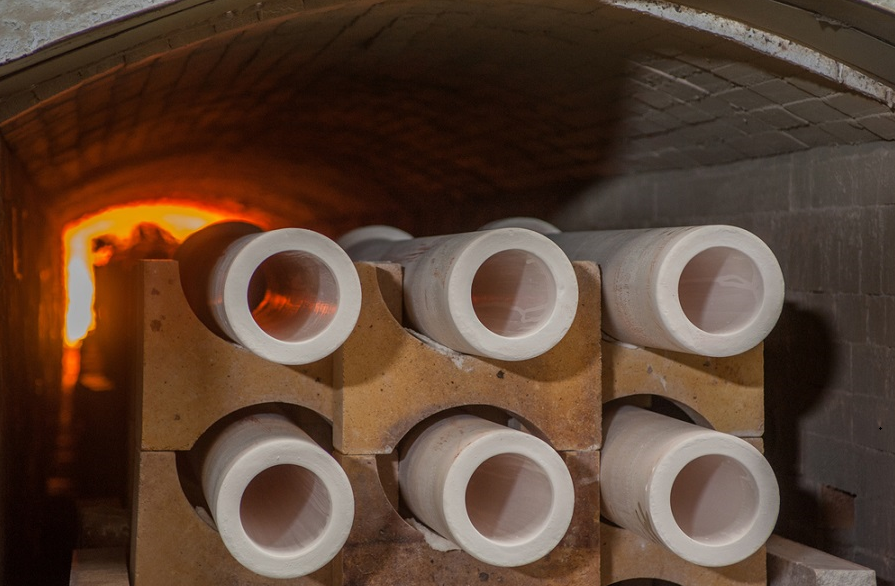The refractory materials sector is experiencing notable shifts driven by various global factors. A significant driver is the increasing demand from industries such as steel, cement, and glass manufacturing, particularly in emerging markets across Africa and South America. As these regions ramp up industrial production, the need for high-performance refractory materials that can withstand extreme temperatures and corrosive environments is on the rise. Additionally, advancements in B2B technology are reshaping sourcing strategies, with digital platforms enabling streamlined procurement processes and enhanced supplier visibility.
Emerging trends include a growing focus on customization and high-performance materials tailored to specific industrial applications. For example, refractory materials designed with enhanced thermal shock resistance are gaining traction, particularly in the metallurgical sector. Moreover, the shift towards automation and Industry 4.0 technologies is influencing sourcing dynamics, as companies increasingly seek suppliers who can integrate seamlessly with their digital systems. International B2B buyers from regions like Europe (e.g., Poland) and the Middle East should stay informed about these trends to strategically align their procurement strategies.
Sustainability is becoming a cornerstone of sourcing strategies within the refractory materials sector. International B2B buyers are increasingly prioritizing suppliers that demonstrate a commitment to environmental responsibility and ethical sourcing practices. This shift is partly driven by regulatory pressures and the growing awareness of environmental impacts associated with material extraction and production processes.
Incorporating sustainability into supply chains not only meets compliance requirements but also enhances brand reputation and customer loyalty. Buyers should consider sourcing refractory materials that are certified as 'green' or have undergone eco-friendly manufacturing processes. Certifications such as ISO 14001 for environmental management systems can serve as indicators of a supplier's commitment to sustainability. Additionally, opting for refractory materials that utilize recycled content or are produced with lower emissions can significantly mitigate the environmental footprint.
The refractory materials market has evolved significantly over the past few decades, responding to the changing demands of various industries. Initially, the sector was dominated by traditional materials like clay and silica-based refractories, primarily used in high-temperature applications. However, the advent of advanced materials, such as alumina, zirconia, and silicon carbide, has transformed the landscape, offering enhanced performance characteristics and longevity.

A stock image related to examples of refractory materials.
This evolution has been driven by technological advancements in material science and an increased understanding of the operational challenges faced by industries. As sectors like steel production and petrochemicals expand, the demand for innovative refractory solutions continues to grow. For international B2B buyers, understanding this historical context is crucial for making informed sourcing decisions and anticipating future market developments.
How do I select the right refractory material for my application?
Choosing the appropriate refractory material depends on several factors, including operating temperature, chemical exposure, and mechanical stress. Begin by assessing the specific conditions of your application, such as thermal cycling or corrosive environments. Consult with suppliers who can provide data sheets and case studies relevant to your industry. Additionally, consider materials that offer high thermal stability and resistance to thermal shock. Engaging in discussions with experts in the field can also guide you towards optimal selections that enhance performance and longevity.
What are the most common types of refractory materials used in industry?
The most widely used refractory materials include fireclay, high alumina, silica, and magnesia-based refractories. Fireclay refractories are popular for their versatility and affordability, while high alumina refractories are favored for high-temperature applications due to their excellent thermal stability. Silica refractories are commonly used in glass manufacturing, and magnesia refractories are often employed in steelmaking. Understanding the properties and best-use scenarios for each type can help you make informed purchasing decisions.
What are the minimum order quantities (MOQ) for refractory materials?
Minimum order quantities can vary significantly between suppliers and the specific types of refractory materials. Typically, MOQs can range from a few tons to several dozen tons, depending on the material and the supplier's production capabilities. When sourcing refractory materials, inquire about the MOQ during your initial discussions. If your needs are lower than the MOQ, consider negotiating with the supplier or exploring bulk purchasing options with other companies to meet the requirements.
What are the best practices for vetting suppliers of refractory materials?
Vetting suppliers involves several critical steps. Start by researching their reputation in the industry, looking for reviews and testimonials from previous clients. Evaluate their certifications and compliance with international standards such as ISO or ASTM. It's also important to assess their production capabilities and quality assurance processes. Request samples to evaluate the material quality firsthand. Lastly, consider establishing a relationship through smaller trial orders before committing to larger purchases, allowing you to gauge reliability and service.
How can I customize refractory materials for my specific needs?
Customization options for refractory materials depend on the supplier's capabilities. Many manufacturers offer tailored solutions, including specific formulations to enhance thermal resistance or chemical durability. When discussing customization, clearly communicate your application requirements, including operating conditions and any unique challenges. Collaborate with the supplier's technical team to develop a solution that meets your specifications. Remember, customization may involve additional lead times and costs, so plan accordingly.
What payment terms should I expect when purchasing refractory materials internationally?
Payment terms can vary widely based on the supplier and the nature of the transaction. Common practices include upfront payments, letters of credit, or payment upon delivery. For international transactions, negotiating favorable terms is essential, especially for large orders. Ensure that you understand all costs involved, including shipping and customs duties. It may be beneficial to work with suppliers who offer flexible terms that align with your financial strategies, such as installments or deferred payments.

A stock image related to examples of refractory materials.
What quality assurance practices should I look for in refractory material suppliers?
Quality assurance is crucial when sourcing refractory materials. Look for suppliers that implement rigorous testing protocols, such as thermal shock resistance, chemical composition analysis, and physical property evaluations. Certifications like ISO 9001 can indicate a commitment to quality management. Request detailed documentation of their QA processes, including batch testing results and traceability. Establishing a solid QA framework with your supplier can significantly reduce the risk of material failure and enhance operational efficiency.
What logistics considerations are important for importing refractory materials?
Logistics play a vital role in the successful procurement of refractory materials. Consider factors such as lead times, shipping methods, and customs regulations specific to your region. Ensure that the supplier can provide clear shipping timelines and track shipments effectively. Additionally, factor in the costs associated with freight, insurance, and potential tariffs. Collaborate with logistics experts to streamline the import process, minimize delays, and ensure that materials arrive in optimal condition for your operations.
The information provided in this guide, including content regarding manufacturers, technical specifications, and market analysis, is for informational and educational purposes only. It does not constitute professional procurement advice, financial advice, or legal advice.
While we have made every effort to ensure the accuracy and timeliness of the information, we are not responsible for any errors, omissions, or outdated information. Market conditions, company details, and technical standards are subject to change.
B2B buyers must conduct their own independent and thorough due diligence before making any purchasing decisions. This includes contacting suppliers directly, verifying certifications, requesting samples, and seeking professional consultation. The risk of relying on any information in this guide is borne solely by the reader.
As international B2B buyers navigate the complexities of sourcing refractory materials, understanding the nuances of strategic sourcing becomes paramount. The analysis of refractory materials highlights not only their critical roles in various industries—ranging from metallurgy to glass manufacturing—but also the importance of selecting the right supplier. Buyers should prioritize suppliers who demonstrate a commitment to quality, sustainability, and innovation, ensuring they meet the specific thermal and chemical resistance needs of their operations.
What are the key benefits of strategic sourcing in the refractory materials sector? By adopting a strategic sourcing approach, businesses can optimize costs, improve supply chain resilience, and enhance product performance. This is particularly relevant for buyers in Africa, South America, the Middle East, and Europe, where market dynamics can vary significantly.
Looking ahead, it is crucial for B2B buyers to stay informed about emerging trends and technologies in refractory materials. Engage with suppliers who offer comprehensive support and insights into product advancements. Now is the time to leverage strategic sourcing not just as a procurement strategy, but as a pathway to innovation and competitive advantage in your industry.
Tags: Black Silicon Carbide, White Fused Alumina, Brown Fused Alumina, Pink Fused Alumina, Black Fused Alumina